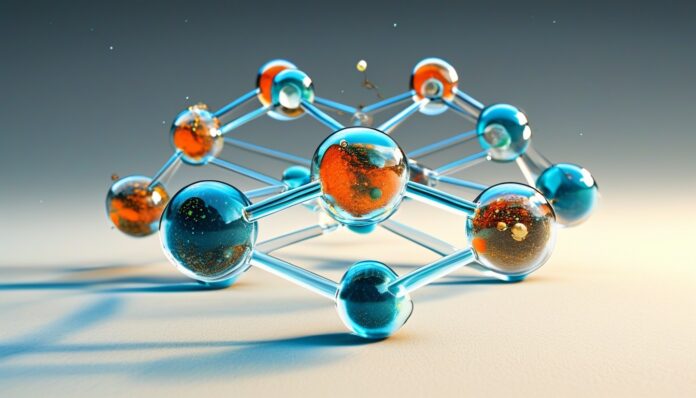All the matter around us, whether objects on Earth or in the most distant galaxies, consists of tiny particles—atoms, which form more complex compounds called molecules.
Entire branches of physics and chemistry study the structure and interaction of these microscopic building blocks. Although research in this area might seem dull, the natural world has much to amaze even those far removed from scientific pursuits.
10 Astonishing Facts About Atoms and Molecules:
- Atoms consist of a nucleus made up of protons and neutrons, with electrons orbiting around it. The dense nucleus accounts for 99.9% of the atom’s mass. If you imagine the whole quantum system as a football field, the nucleus would be the size of a pea. Electrons are the lightest components of the atom, and their orbits are so far from the center that the tiny structure is actually 99% empty space.
- Subatomic particles in the nucleus are held together by a nuclear force. Negatively charged electrons stay in orbit due to the electromagnetic force, which attracts them to the positively charged protons. The nuclear force is almost a thousand times stronger than gravity but only acts within microscopic structures.
- Protons and electrons are made of even smaller particles called quarks. Quarks only exist in bound states and are divided into types: up, down, strange, charm, top, and bottom. Their behavior is as unusual as their names, leading scientists to speculate about the existence of unknown laws operating at the subatomic level.
- Atoms of chemical elements differ by the number of protons they have. For instance, hydrogen’s nucleus has just one particle, carbon has six, and aluminum has thirteen. Matter is not always homogeneous: gold consists of atoms of a single type, while sodium chloride is formed from the bonding of atoms from two different elements.
- Scientists create atoms by artificially adding protons. The first experimental element was technetium, which has 43 particles in its nucleus. This radioactive, powdery metal was synthesized in 1937. It has no stable isotopes and is produced in nuclear reactors for medical and industrial use. There are about 100 known types of atoms, over 90% of which occur naturally, while the rest are “constructed” in laboratories.
- A human body weighing 70 kg is made up of 7 octillion atoms, most of which are nitrogen, oxygen, and carbon. About 98% of these particles are replaced annually.
- Seventy-three percent of all atoms in the observable universe are hydrogen atoms.
- The atomic bomb is a weapon of mass destruction capable of killing millions. When an atom’s nucleus is split, an enormous amount of energy is released, causing destruction. Atomic bombs were used at the end of World War II, with catastrophic results: hundreds of thousands died from the two American bombs dropped on Hiroshima and Nagasaki.
- Molecules of a specific substance consist of identical atoms. These particles are too small to be seen through ordinary microscopes; only the most advanced instruments can observe them. To put it in perspective, a molecule is as much smaller than an apple as an apple is smaller than the Earth. One grain of sand contains 20 million billion microscopic particles.
- Molecules are always in motion. This phenomenon was discovered by R. Brown in 1827 and later explained by A. Einstein. The British botanist mixed a drop of water with plant pollen and placed it under a microscope. Observations showed that the pollen moved continuously for no apparent reason, which was later attributed to the random movement of water molecules.
